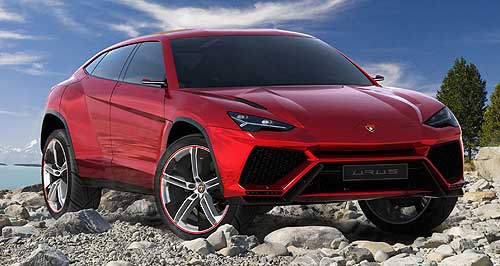Make / Model Search
News - LamborghiniLamborghini sticks with petrol-powered sportscarsBull charging: With heavy battery packs, Lamborghini says hybrid technology will be limited to less performance-focused vehicles, such as the forthcoming Urus SUV. With no Asterion planned, Lamborghini elects to confine PHEV power to its SUV22 Apr 2016 LAMBORGHINI has committed to internal combustion for its more performance-focused models for the immediate future, saying the current state of hybrid technology prevents the electrification of raging bull supercars. Although the iconic Italian car-maker provided a glimpse into its alternative energy future with a hybrid sportscar concept called Asterion at the 2014 Paris motor show, the company says no production version is planned because electrification is not right for its most potent vehicles yet. While arch rivals Ferrari and McLaren have already breached hyper-hybrid territory with their LaFerrari and P1 models, Lamborghini argues that without extended pure-electric range, the two rivals are not true hybrids. The Asterion has a range of up to 50km thanks to its plug-in charging system, but despite its vicious 678kW output, its maker says the weight of current technology battery packs is not conducive to the minimum weight and optimum weight distribution of pure supercars. However, the new powertrain technology was a perfect fit for Lamborghini's first SUV – the Urus - due to its torque characteristics and the more flexible design of an SUV. Speaking at the launch of the new rear-drive Huracan LP580-2, Lamborghini technical project leader Riccardo Bettini told GoAuto that the hybrid powertrain was originally a standalone project, but it was later decided to combine it with the Asterion styling concept. “In the beginning it was an exercise to see what we can do and a technical demonstrator for ourselves,” he said. “Then we decided to match it with a motor show car to see the reaction of the public with a supersport car, which is not present.” Mr Bettini said that he believed the LaFerrari and McLaren P1 were not cut from the same cloth as the Asterion and that a true hybrid hypercar was yet to be released in production form. “The other cars (competitors) of higher level (performance) with some hybridisation are not the same concept," he said. “It's only a small e-boost. The LaFerrari or P1 of McLaren are not hybrid cars. It's only a boost that can give you more acceleration. “So we wanted to see what is the feeling of the people of this information and see if they can appreciate such an exercise in a Lamborghini, because it's not a conventional car.” Mr Bettini explained that the show car was intended to gauge the public response to a hybrid Lamborghini sportscar, but Lamborghini Asia Pacific general manager Andrea Baldi said the concept's styling distracted most spectator's attention from the technological aspects. “I think the best answer is that nobody really talked about the engine when they saw the Asterion,” he said. Mr Bettini went on to explain that the company believed there were insufficient numbers of potential hybrid customers to justify the business case for a production model, and until battery technology advanced to more lightweight cells, it would keep its powder dry. “At the moment we need to also plan the volumes behind this and we see that there are not so many people that can at least ensure production of such a model,” he said. “Also considering the limitation of the technology – the battery pack is really heavy so when you match a supersport car with a package of 200kg, it's no more the right balance between performance and electrification. The fit of PHEV is better on the SUV.” Mr Baldi repeated Mr Bettini's sentiments and said that while the company was not yet ready to jump into PHEV supercars, the time was right for its first SUV powered by alternative energy. “At the moment the market is too young to accept this kind of technology in such a level of cars," he said. “It is too early but it's the future maybe. “We can do it but at the moment let's focus on Urus. For Urus, it has been announced that the second engine is going to be PHEV.” While Lamborghini has nothing to announce regarding a model that will bring the Asterion's looks to a showroom model, Mr Baldi concluded by saying that more outlandish models such as the instantly sold-out Aventador-based Centenario were on the way. “You have seen with the Centenario. We sold 40 cars at an average of €2m ($A2.9m) each even before announcing it. There's a bunch of customers that you just say 'we are doing some ...' and they say 'I want it'. Some of them had just seen a picture. “We can do many nice cars, we have many ideas.” The Urus will be the first Lamborghini in the company's 53-year history to be offered with more than one engine and, in addition to the hybrid unit, the SUV will also be powered by a turbocharged combustion engine. The production Urus is expected to debut in 2018.  Read more |
Click to shareLamborghini articlesResearch Lamborghini Motor industry news |












Facebook Twitter Instagram